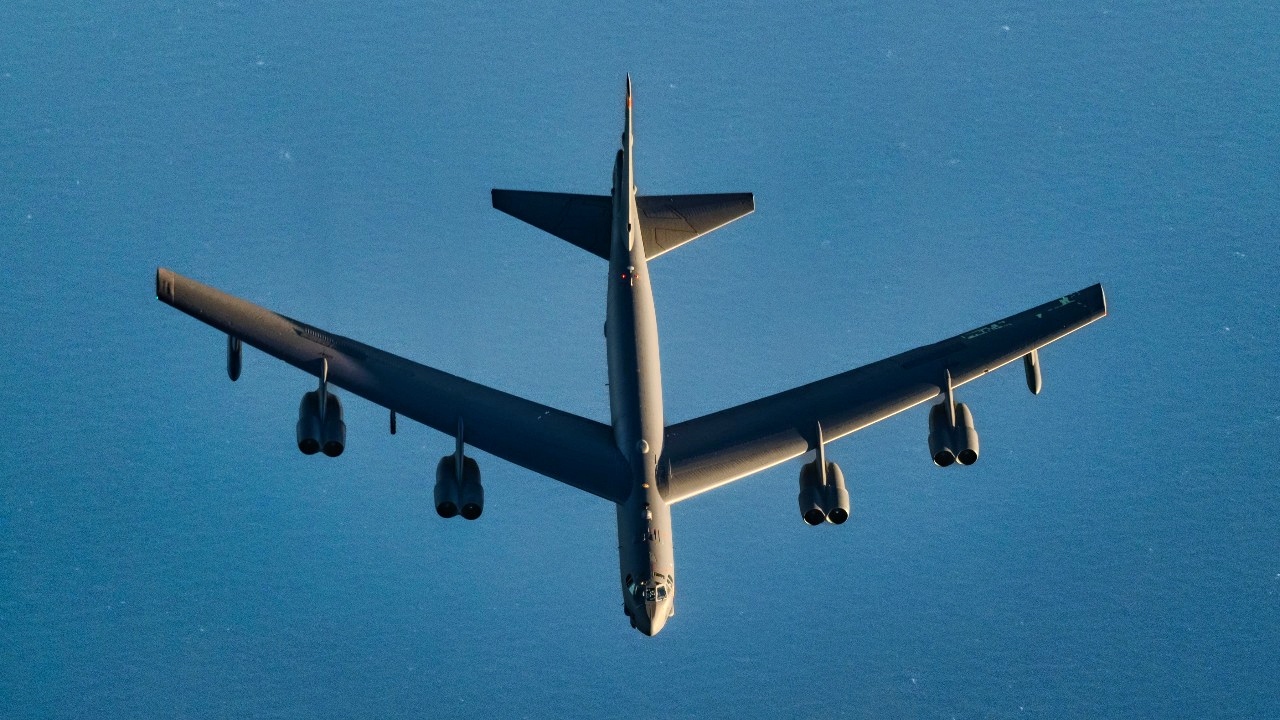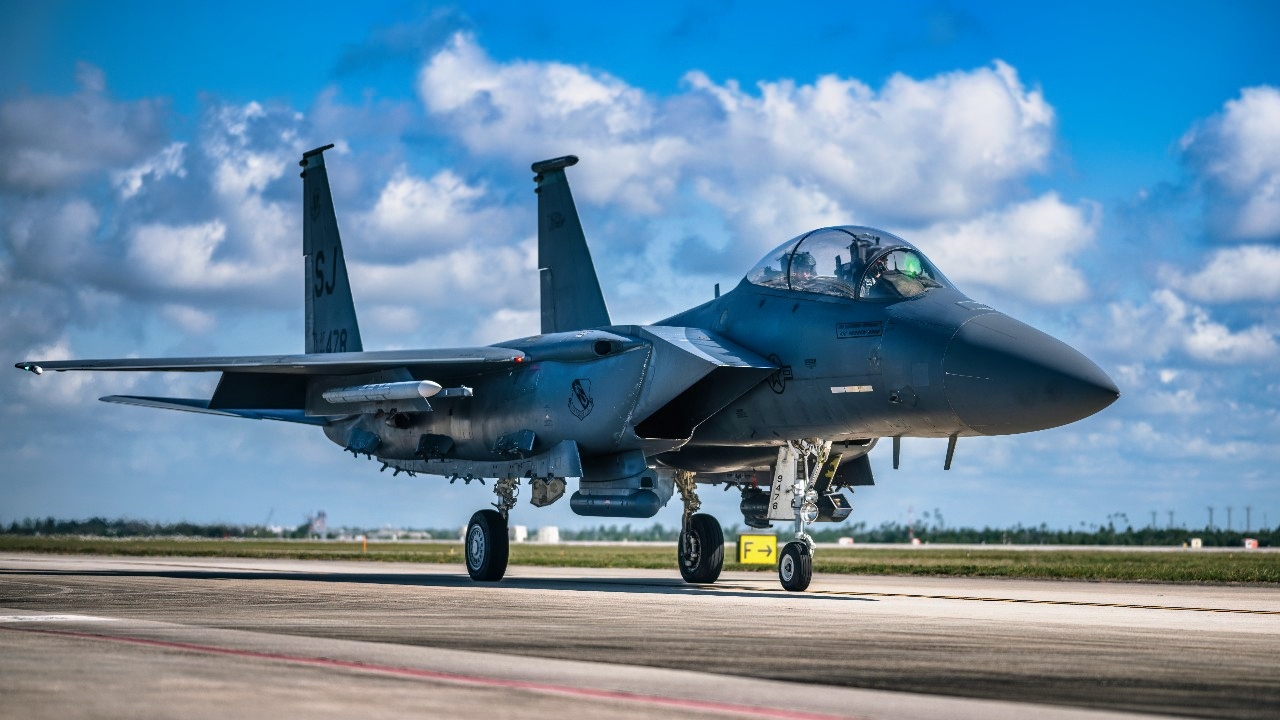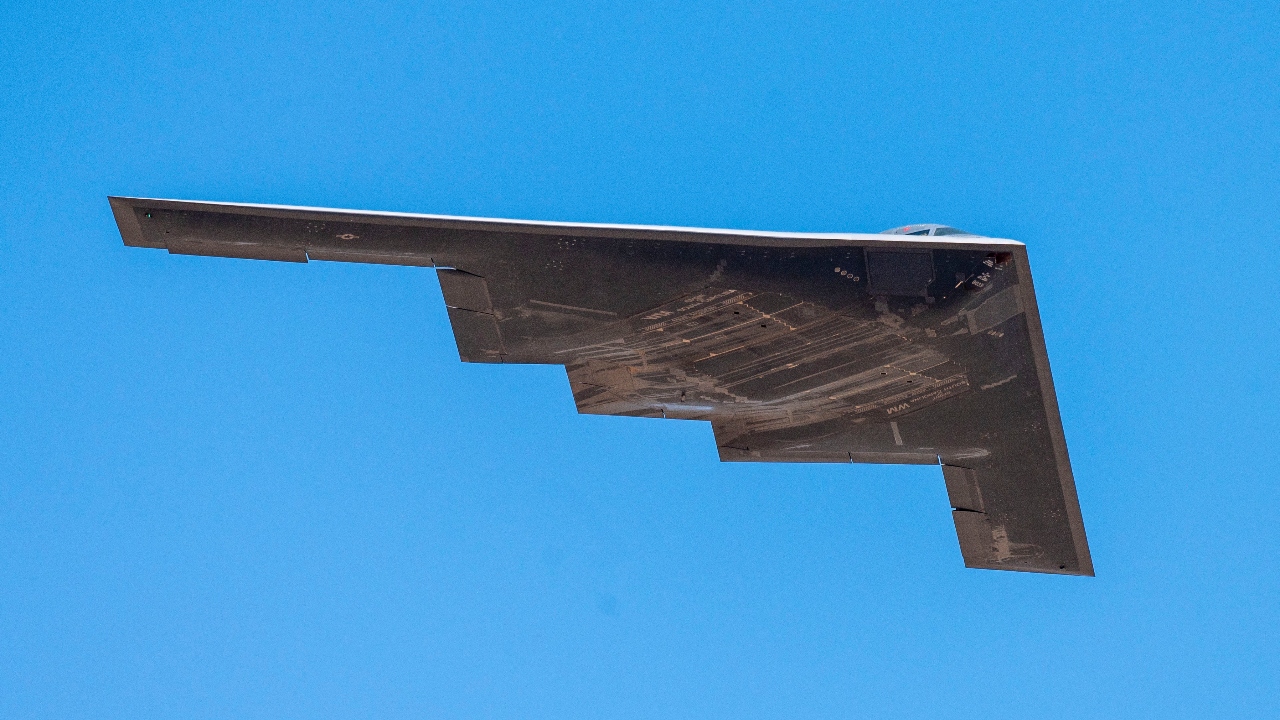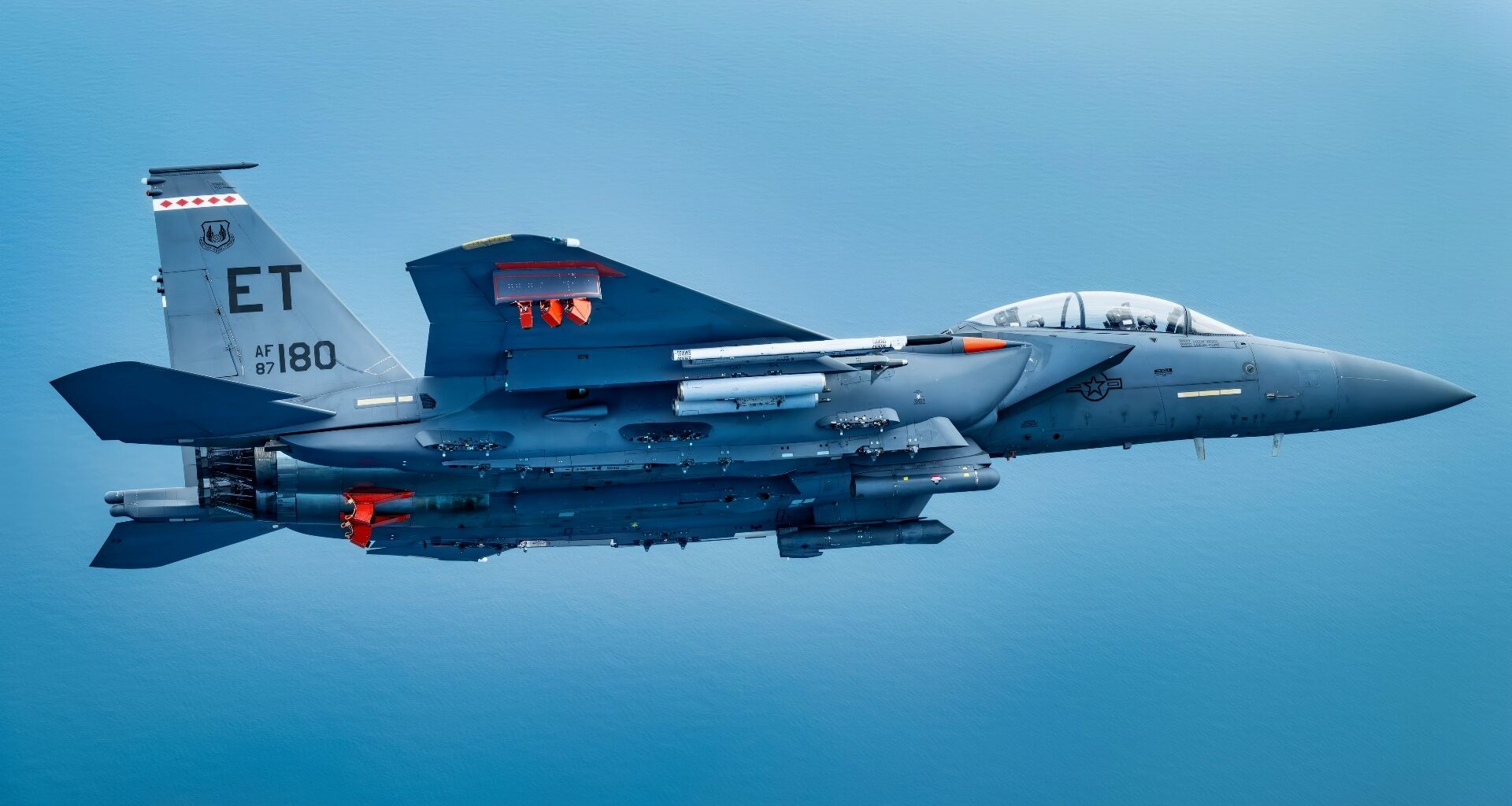Key Points and Summary: Change Is Coming To the U.S. Air Force – The U.S. Air Force is pivoting from counterterror missions to deterring China and Russia, driving a force redesign around stealth, autonomy, AI, sensors, and adaptive engines.
-Legacy punch remains: the B-52 Superfortress gets new F130 engines and a modern radar, with inlet issues resolved in testing as CERP moves ahead.

A U.S. Air Force B-52H Stratofortress flies a show of presence mission over the U.S. Central Command area of responsibility, Feb. 20, 2025. Strategic bombers contribute to stability in the CENTCOM theater by demonstrating the credibility, capability, and readiness of the U.S. bomber force, which is critical to deterring attacks against the U.S. and its allies and partners. (U.S. Air Force photo by Staff Sgt. Jackson Manske)
-The sixth-generation F-47—winner of NGAD—will replace the F-22 and anchor a family of systems, while the B-21 Raider restores penetrating strike and sensing.
-Expect fewer, more capable crewed aircraft teamed with Collaborative Combat Aircraft, and retirements of F-16s, F-15s, B-1Bs, B-2s, older tankers and AWACS as modular, networked weapons arrive.
The U.S. Air Force’s Next Era: B-52J Upgrades, F-47 NGAD, and the B-21
The U.S. Air Force is no longer spending the bulk of its missions responding to non-state actors and regional threats in the Middle East.
Such actions defined the service’s involvement in the war on terror, but the Air Force now is competing with near-peer adversaries China and Russia.
Such adversaries place significant demands on the platforms currently in use by the Air Force.
The service is retooling for the future fight. Technological advancements in the realms of autonomous systems, artificial intelligence, and advanced sensor suites are key to the transition. So are adaptive and highly efficient engines, as well as stealth technology and modular systems.
B-52 Superfortress Upgrade
Yet even as aerospace advancements and increasingly complex technologies come online to give shape to future sixth-generation aircraft, there is one area in which the Air Force seems content to remain rooted in its history: the operation of the B-52 Superfortress.
Thanks to an ongoing upgrade program, which would see the Cold War-era strategic bomber outfitted with new engines and radar, the Air Force aims to extend the aircraft’s service life to nearly 100 years.
The upgrade recently hit a speed bump. The B-52’s modernization program includes a focus on the bomber’s eight engines. Driving the Stratofortress now are engines based on a design from the 1950s: Pratt & Whitney’s TF33. The Air Force awarded Rolls-Royce, the British aerospace giant, the contract to develop new B-52 engines. But the air inlets – fairings that direct air into the engines – were found to be suboptimal.

A U.S. Air Force F-15E Strike Eagle assigned to the 335th Fighter Squadron, Seymour Johnson Air Force Base, North Carolina, taxis during Checkered Flag 25-2 at Tyndall AFB, Florida, May 14, 2025. Checkered Flag, one of the Department of Defense’s largest air-to-air exercises, integrates fourth and fifth-generation aircraft to enhance mobility, deployment, and employment capabilities. (U.S. Air Force photo by Airman 1st Class Zeeshan Naeem).
The issue apparently has been rectified after wind tunnel testing, and the Commercial Engine Replacement Program, which will replace and upgrade engine cockpit displays, electrical power generation systems, engine struts, and the engines themselves, is moving forward despite the recent hiccup.
A new radar – a derivative of the AN/APQ-188 – will also be integrated onto the 76 B-52s slated for upgrade.
F-47
One of the most anticipated aircraft of the last several years is the F-47, the sixth-generation air superiority fighter that the U.S. Air Force plans to replace the F-22 Raptor. Although the Raptor is notionally the stealthiest fighter flying today, its production line is closed and unlikely to be reopened.
With the F-22 barred from export even to close friends and allies, the F-47 will jump into the breach as the future manned fighter of choice for the Air Force.
The F-47 was the winner of the Next Generation Air Dominance competition, an initiative that aimed to yield a new fighter jet powered by a family of new systems, including advanced technologies such as an adaptive, highly efficient power plant.
The engine aspect of the Next Generation Air Dominance program is planned to result in power plants that have better thrust across the range of flight profiles. This would benefit not just the F-47 but all upcoming aircraft, including the U.S. Navy’s much-hoped-for F/A-XX carrier-capable fighter.
The U.S. Air Force Is Embracing Massive Change: Is It Ready?
The Air Force is flying toward a very different future – one that combines fewer but highly capable manned platforms. Its new fighters and bombers will be defined by strong stealth capabilities, world-class sensor suites, and advanced propulsion and manufacturing techniques.
They will team with an increasing number of unmanned platforms, including armed models for offensive warfare, and unarmed platforms equipped with robust sensors for battlefield information collection. Modularity and networked capabilities are increasingly coming online, not just in manned and unmanned platforms, but also in missile and sensor systems.

A B-2 Spirit makes a low pass flyover as part of the Warriors over the Wasatch airshow at Hill Air Force Base June 29, 2024. The 2024 Warriors over the Wasatch airshow was centered around the “Breaking Barriers Together” theme, celebrating one community. The B-2 Spirit, the predecessor to the new B-21 Raider, has been the U.S. Air Force’s premiere stealth bomber for more than 20 years. (U.S. Air Force photo by Senior Airman Jack Rodgers)
One of the important parts of this future is the entry into service of the B-21 Raider, which will reinforce the airborne leg of the United States’ nuclear triad. That bomber will also incorporate a number of information-collection technologies that the Cold War-era B-2 Spirit lacks.
The retirement of older platforms such as F-16 and F-15 fighters, the B-1B Lancer bomber, and the B-2 Spirit – as well as older tanker aircraft and Airborne Warning and Control platforms – will make way for newer, more resilient families of systems.
The F-47 will also be joined by unmanned Collaborative Combat Aircraft.
About the Author: Caleb Larson
Caleb Larson is an American multiformat journalist based in Berlin, Germany. His work covers the intersection of conflict and society, focusing on American foreign policy and European security. He has reported from Germany, Russia, and the United States. Most recently, he covered the war in Ukraine, reporting extensively on the war’s shifting battle lines from Donbas and writing on the war’s civilian and humanitarian toll. Previously, he worked as a Defense Reporter for POLITICO Europe. You can follow his latest work on X.
More Military
SR-72 Mach 6 Mistake the Air Force Needs to End
The U.S. Navy’s Ohio-Class Missile Submarine Nightmare
America Has Mini-Aircraft Carriers
Russia’s Su-57 Felon Stealth Fighter: Made in India?
F-22 Raptor vs. J-20 Stealth Fighter: Hope This Never Happens

